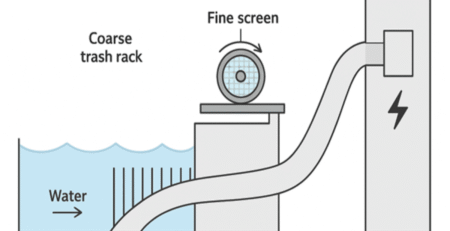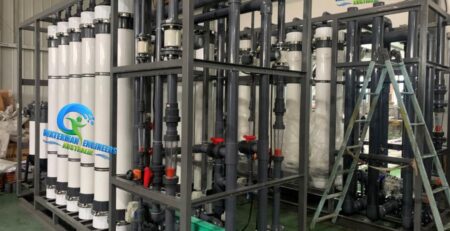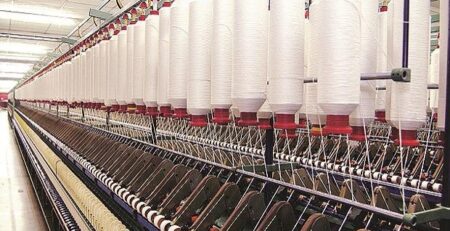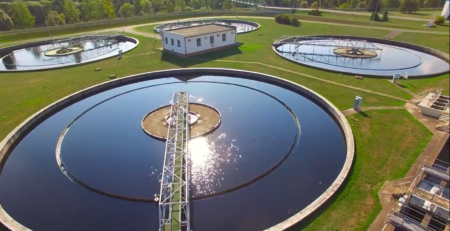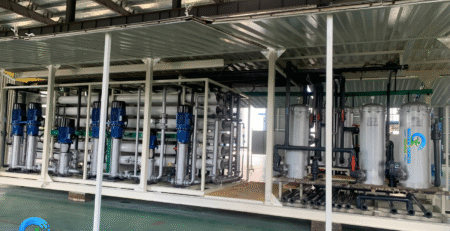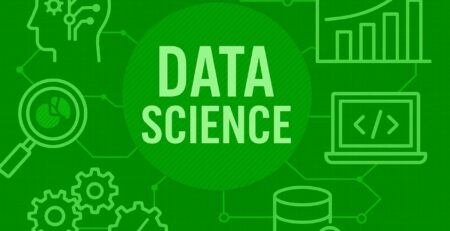Solar Power plant’s importance in Greenfields Projects
Solar power plants play a significant role in greenfield projects due to their numerous environmental and economic benefits. Here are some of the key reasons why solar power plants are important in greenfield projects:
Renewable Energy Generation:
Solar power plants harness energy from the sun, a renewable source of energy that does not deplete over time. By utilizing solar energy, greenfield projects can reduce their dependence on non-renewable energy sources such as fossil fuels, helping to mitigate climate change and promote sustainability.
Energy Independence:
Greenfield projects powered by solar energy can achieve a certain level of energy independence. They are not reliant on external energy suppliers, which can be vulnerable to price fluctuations and supply disruptions. Solar power plants provide a stable and predictable source of electricity, reducing reliance on non-renewable resources and providing long-term energy security.

Cost Savings:
Solar power has experienced a significant decrease in costs over the years, making it an increasingly affordable energy option. Greenfield projects can benefit from reduced operational costs by generating their own electricity on-site, lowering their reliance on grid electricity and saving money in the long run.
Job Creation and Local Economic Development:
Solar power plants require skilled labour for design, installation, and maintenance. By incorporating solar energy into greenfield projects, new job opportunities can be created, boosting the local economy, and supporting the growth of the renewable energy sector.
Environmental Stewardship:
Greenfield projects that prioritize solar power demonstrate a commitment to environmental stewardship. They serve as positive examples of sustainable development, inspiring other projects, and communities to adopt clean energy practices and reduce their environmental impact.

Scalability and Modularity:
Solar power plants can be easily scaled up or down based on energy demand. They can be installed in various sizes, from small installations for individual buildings to large-scale utility plants. This flexibility allows greenfield projects to adapt to changing energy needs and expand their renewable energy capacity as required.
Overall, solar power plants are crucial in greenfield projects as they enable the integration of clean, renewable energy sources into the development process. By embracing solar energy, greenfield projects contribute to a more sustainable future, reduce their environmental impact, and promote economic growth.
Traditional power plants and their disadvantages
Traditional power plants, which primarily rely on fossil fuels like coal, natural gas, and oil, have several disadvantages compared to solar power plants. Here are some of the key disadvantages of traditional power plants:

Environmental Impact:
Traditional power plants emit greenhouse gases, such as carbon dioxide (CO2), which contribute to climate change. They also release pollutants like sulfur dioxide (SO2), nitrogen oxides (NOx), and particulate matter, which are harmful to human health and the environment. Solar power plants, on the other hand, have virtually no direct emissions of greenhouse gases or air pollutants during operation.
Depletion of Natural Resources:
Fossil fuels used in traditional power plants are non-renewable resources that are finite in supply. As these resources are consumed, their availability decreases, and extraction becomes more challenging and expensive. Solar power plants, in contrast, harness the abundant and renewable energy of sunlight, which is freely available.
Dependence on Fuel Supply and Price Volatility:
Traditional power plants require a constant supply of fuel, the availability and price of which can be subject to geopolitical tensions, market fluctuations, and supply disruptions. Solar power plants, once installed, rely on sunlight, which is not subject to such price volatility and supply constraints.
Land and Water Use:
Traditional power plants, particularly those based on fossil fuels, often require large land areas for mining, extraction, and infrastructure development. Additionally, some power plants rely on significant amounts of water for cooling purposes, leading to water scarcity concerns in arid regions. Solar power plants, although they require space for solar panel installation, have comparatively lower land and water requirements.

Centralized Distribution:
Traditional power plants are often large-scale facilities that are centrally located and require extensive transmission and distribution networks to deliver electricity to end consumers. This centralized model can be less efficient, leading to transmission losses and grid vulnerabilities. In contrast, solar power plants can be distributed across various locations, including rooftops, reducing the need for long-distance transmission and improving overall grid resilience.
Limited Operational Flexibility:
Traditional power plants, particularly those based on fossil fuels, may have limitations in operational flexibility. They require continuous fuel supply and often have longer start-up and shutdown times. Solar power plants, on the other hand, can quickly start producing electricity as soon as sunlight is available and can be easily scaled up or down based on demand.
Traditional power plants working mechanism.
Traditional power plants, also known as thermal power plants, convert various forms of fuel, such as coal, natural gas, or oil, into electricity through a series of processes. Here is a detailed overview of the working mechanism of a traditional power plant:

Fuel Combustion:
The fuel, such as coal, is first transported to the power plant and stored in a coal yard or storage facility. It is then fed into a boiler, where it undergoes combustion. The combustion process releases energy in the form of heat.
Boiler:
The boiler is a large, specialized vessel where the fuel is burned. The heat generated from the combustion process converts water into high-pressure steam. The boiler contains tubes filled with water that absorb the heat, creating steam at very high temperatures and pressures.
Steam Turbine:
The high-pressure steam is directed into a steam turbine, a large rotary mechanical device. As the steam flows through the turbine blades, it causes the turbine to rotate at high speeds.

Generator:
Connected to the steam turbine is a generator, which is driven by the mechanical energy from the turbine. The generator consists of a rotor and stator, and as the rotor spins, it produces electricity by inducing a flow of electrons in the stator windings. The rotation of the turbine is synchronized with the generator to produce electricity at the desired frequency.
Cooling System:
The cooling system, which can vary depending on the power plant design, removes waste heat from the condenser. Cooling towers use the process of evaporation to dissipate the heat, while some power plants use a direct water source, such as a river or ocean, to cool the condenser.
Circulating Water System:
The cooling water used in the condenser is typically circulated through a closed-loop system. After passing through the condenser, the water is cooled and returned to the condenser for reuse. This helps conserve water resources.
Transmission and Distribution:
The electricity generated by the generator is initially at a low voltage. It is then passed through transformers to increase the voltage for efficient transmission over long distances. The high-voltage electricity is transmitted through power lines and substations, eventually reaching homes, businesses, and other electrical loads through the distribution network.

Control Systems and Monitoring:
Traditional power plants incorporate various control systems and monitoring devices to ensure safe and efficient operation. These systems control fuel supply, boiler temperature and pressure, turbine speed, and other parameters. They also monitor emissions and maintain compliance with environmental regulations.
Traditional power plants vs solar power plants
Traditional Power Plants:
- Use fossil fuels like coal, natural gas, and oil as their primary source of energy.
- Involve the combustion of fuel to generate heat, which is then converted into mechanical energy and, finally, electricity.
- Emit greenhouse gases and air pollutants, contributing to climate change and air pollution.
- Depend on a continuous supply of fuel, which is subject to price volatility and resource depletion.
- Require large land areas for mining, extraction, and infrastructure development.
- Often use significant amounts of water for cooling, leading to water scarcity concerns.
- Operate in a centralized model, requiring extensive transmission and distribution networks.
- Have limited operational flexibility and longer start-up and shutdown times.

Solar Power Plants:
- Harness sunlight as the source of energy through photovoltaic (PV) or concentrating solar power (CSP) technologies.
- Convert sunlight directly into electricity without the need for combustion.
- Produce electricity without emitting greenhouse gases or air pollutants during operation.
- Rely on an abundant and renewable energy source that is not subject to price volatility.
- Have comparatively lower land requirements, especially for distributed systems like rooftop solar.
- Generally, require less water for operation.
- Can be deployed in a distributed manner, reducing the need for extensive transmission and distribution infrastructure.
- Have relatively quick start-up times and can easily scale up or down based on demand.
Solar power plants offer several advantages over traditional power plants, including lower environmental impact, reduced dependence on fossil fuels, greater resource sustainability, and decentralized deployment options. However, solar power plants also face challenges such as intermittent energy production and the need for energy storage solutions to ensure reliable power supply.
Solar Power plants working principal.
Solar power plants, also known as solar farms or photovoltaic (PV) power plants, convert sunlight into electricity through a series of interconnected components and processes. Here is a detailed overview of the process involved in a solar power plant:

Solar Panels (Photovoltaic Modules):
The solar power plant begins with the installation of solar panels, which consist of numerous photovoltaic (PV) cells. These cells are made of semiconductor materials, typically silicon, that convert sunlight directly into electricity through the photovoltaic effect.
Sunlight Capture:
The solar panels are strategically positioned to capture maximum sunlight. They are typically mounted on fixed structures or tracking systems that allow them to follow the sun’s movement throughout the day, optimizing energy generation.
DC Power Generation:
When sunlight hits the solar panels, the PV cells absorb the photons (particles of light) and release electrons, creating a flow of direct current (DC) electricity. Each PV cell generates a relatively low voltage, typically around 0.5 to 0.6 volts.
Stringing and Combiner Boxes:
Multiple solar panels are connected in series to form strings, increasing the voltage output. The strings are then combined in combiner boxes to aggregate the DC power from multiple strings into a single DC circuit.
Inverter Conversion:
The DC electricity produced by the solar panels is converted into alternating current (AC) electricity through inverters. Inverters convert the DC power to a suitable voltage and frequency for grid connection or for use in on-site electrical systems.

Transformer and Grid Connection:
The AC electricity from the inverters is passed through a transformer to increase the voltage to a level suitable for transmission and distribution. The transformed electricity is then fed into the electrical grid for distribution to consumers.
Metering and Monitoring:
Solar power plants incorporate metering systems to measure the electricity generated. This data is used for billing purposes and to monitor the performance and efficiency of the plant.
Grid Integration and Interconnection:
Solar power plants are connected to the electrical grid through power distribution and transmission infrastructure. This allows the plant to supply electricity to the grid and also draw additional power if needed.

Operation and Maintenance:
Solar power plants require regular inspection, cleaning, and maintenance to ensure optimal performance and longevity. This includes monitoring the performance of individual panels, inverters, and other system components, as well as identifying and addressing any faults or issues.
Grid-Interactive Control Systems:
Advanced solar power plants may also include grid-interactive control systems that enable them to regulate their power output and respond to grid conditions. These systems can provide grid stability services such as voltage and frequency regulation.
Off Grid Solar Power Plant
An off-grid solar power plant, also known as a standalone solar power system, operates independently of the electrical grid. It generates and stores electricity from solar energy to meet the power needs of a specific location or a remote area that is not connected to the grid. Here is a detailed overview of the components and processes involved in an off-grid solar power plant:
Solar Panels (Photovoltaic Modules):
The off-grid solar power plant begins with the installation of solar panels, which consist of photovoltaic (PV) cells. These cells convert sunlight into direct current (DC) electricity through the photovoltaic effect.

Sunlight Capture:
The solar panels are positioned to capture maximum sunlight. They are typically mounted on fixed structures or tracking systems that allow them to follow the sun’s movement throughout the day, optimizing energy generation.
DC Power Generation:
When sunlight hits the solar panels, the PV cells absorb the photons (particles of light) and release electrons, creating a flow of DC electricity. Each PV cell generates a relatively low voltage, typically around 0.5 to 0.6 volts.
Battery Bank:
The DC electricity from the charge controller is stored in a battery bank. The battery bank acts as a reservoir of electrical energy, allowing the solar power plant to supply electricity even when sunlight is unavailable, such as during nighttime or cloudy periods.

Inverter:
When AC electricity is required for use, such as for powering appliances and devices, an inverter is used to convert the DC electricity from the battery bank into usable AC electricity. The inverter transforms the DC power into a suitable voltage and frequency for the electrical load.
Electrical Load:
The AC electricity from the inverter is distributed to the electrical load, which can include lighting, appliances, pumps, and other electrical equipment. The load consumes the electricity generated by the solar power plant to meet the specific power needs of the location or area.
Monitoring and Control Systems:
Off-grid solar power plants often incorporate monitoring and control systems to track the performance of the system, battery status, and energy usage. These systems can provide information on energy production, battery charge levels, and system efficiency, allowing for optimized operation and maintenance.
Backup Generator (Optional):
In some off-grid solar power plants, a backup generator may be included as a supplemental power source. The generator can be used to recharge the battery bank during extended periods of low sunlight or high energy demand, ensuring a continuous power supply.

Operation and Maintenance:
Off-grid solar power plants require regular operation and maintenance activities. This includes monitoring the performance of solar panels, battery bank, charge controller, and inverter, as well as checking and maintaining electrical connections, cleaning the panels, and ensuring proper functioning of the system components.
Off-grid solar power plants are commonly used in remote areas, rural communities, and locations where grid connection is impractical or economically unviable. They provide a sustainable and reliable source of electricity, allowing for energy self-sufficiency and reducing dependence on traditional fossil fuel-based power sources.
Battery for Power Storage
Batteries play a crucial role in power storage for various applications, including renewable energy systems like solar power plants. They store excess electrical energy generated by the solar panels during periods of high production and make it available for use during times of low or no solar energy production. Here is a detailed overview of batteries used for power storage:

Battery Chemistry:
Different battery chemistries are used for power storage, each with its own characteristics and performance. Common battery chemistries used for power storage include:
- Lead-Acid Batteries:
These batteries have been used for decades and are relatively inexpensive. They are available in two types: FLAB, which required regular maintenance and TUDWB, and SLAB, which are maintenance-free.

- Lithium-Ion Batteries:
Lithium-ion batteries have gained popularity due to their high energy density, longer lifespan, and lightweight design. They provide efficient energy storage, fast charging capabilities, and are commonly used in residential and commercial solar power systems.

- Flow Batteries:
Flow batteries use a liquid electrolyte stored in separate tanks, allowing for flexible energy storage capacity. They offer scalability, longer cycle life, and are suitable for large-scale energy storage applications.

- Sodium-Ion Batteries:
Sodium-ion batteries are an emerging technology that shows promise for power storage. They have similarities to lithium-ion batteries but use sodium ions instead, which are more abundant and less expensive.

Battery Bank:
Power storage systems utilize multiple batteries connected together to form a battery bank. The number of batteries and their capacity depend on the energy storage requirements of the system. The battery bank is typically sized to store enough energy to meet the load requirements during periods of low solar energy production, such as at night or during cloudy days.
Charge Controller:
To protect the batteries from overcharging and excessive discharge, a charge controller is used. The charge controller regulates the charging and discharging process, ensuring optimal battery performance and longevity. It monitors the battery bank’s state of charge and adjusts the charging rate accordingly.
Inverter:
The inverter ensures that the stored energy is converted to the correct voltage, frequency, and waveform required by the electrical devices and appliances connected to the system.
Battery Management System (BMS):
A battery management system is used to monitor and control the operation of the battery bank. It tracks parameters such as voltage, current, temperature, and state of charge of each battery within the bank. The BMS helps optimize battery performance, prevent overcharging or deep discharge, and ensures the batteries operate within safe limits.

Efficiency and Round-Trip Efficiency:
Batteries for power storage have an efficiency rating that indicates how much energy can be stored and retrieved from the battery system. Round-trip efficiency refers to the efficiency of charging and discharging the battery. Higher round-trip efficiency means less energy loss during the storage and retrieval process.
Lifecycle and Maintenance:
Battery lifespan varies depending on the chemistry and usage patterns. Regular maintenance may be required, such as monitoring and maintaining proper electrolyte levels in flooded lead-acid batteries or periodic battery capacity checks. Battery lifespan can be extended through proper charging and discharging practices and temperature control.
It’s important to note that the selection of the appropriate battery technology for power storage depends on factors such as system requirements, available space, cost considerations, and desired performance characteristics. Each battery chemistry has its own advantages and limitations, and the choice should align with the specific needs of the solar power plant or energy storage system.

FAQs: Solar Power plant’s importance in Greenfields Projects
What is a Greenfields project?
A Greenfields project refers to a new development or construction project that is built on previously undeveloped land, typically without any existing infrastructure or buildings.
Why are solar power plants important in Greenfields projects?
Solar power plants are important in Greenfields projects because they offer a sustainable and renewable source of energy, reducing reliance on fossil fuels and minimizing the environmental impact of the project.
How does a solar power plant benefit a Greenfields project?
Solar power plants provide a clean and renewable energy source, reducing carbon emissions and helping the project achieve environmental sustainability goals. They also offer long-term cost savings by reducing reliance on grid electricity.
What is the environmental impact of solar power plants in Greenfields projects?
Solar power plants have a minimal environmental impact compared to traditional power plants. They produce no greenhouse gas emissions during operation and reduce the need for fossil fuel extraction and combustion.
Can solar power plants provide all the energy needs of a Greenfields project?
Depending on the size and energy requirements of the project, solar power plants can provide a significant portion or even all of the energy needs. Additional energy storage systems may be required to ensure a continuous power supply.
What are the cost benefits of installing a solar power plant in a Greenfields project?
Installing a solar power plant can provide long-term cost savings on electricity bills, as solar energy is a free and renewable resource. It also offers stability against fluctuating energy prices.
How long does it take to install a solar power plant in a Greenfields project?
The installation timeline for a solar power plant depends on various factors, including the project size and complexity. It typically takes several months to complete the installation and commissioning process.
Can solar power plants be expanded or upgraded in the future?
Yes, solar power plants can be expanded or upgraded in the future to meet increasing energy demands. Additional solar panels can be installed, and energy storage systems can be upgraded or added as needed.
How do solar power plants contribute to the sustainability of Greenfields projects?
Solar power plants contribute to the sustainability of Greenfields projects by providing clean and renewable energy, reducing carbon emissions, and promoting environmental stewardship.
Can solar power plants be aesthetically integrated into Greenfields projects?
Yes, solar power plants can be aesthetically integrated into Greenfields projects. Solar panels can be designed to blend with the surroundings or installed on rooftops to minimize visual impact.
Can solar power plants enhance the market value of Greenfields projects?
Yes, solar power plants can enhance the market value of Greenfields projects. They demonstrate a commitment to sustainability, reduce long-term energy costs, and appeal to environmentally conscious buyers or tenants.
Can solar power plants provide backup power during grid outages in Greenfields projects?
Solar power plants alone cannot provide backup power during grid outages since they are typically grid-tied systems. However, by incorporating energy storage systems, solar power plants can provide backup power in Greenfields projects.
What is the lifespan of a solar power plant in a Greenfields project?
The lifespan of a solar power plant is typically around 25 to 30 years. However, with proper maintenance and component replacements, the plant’s life can be extended.
Can solar power plants be relocated if the Greenfields project is relocated?
Yes, solar power plants can be relocated if the Greenfields project is relocated. The solar panels and other equipment can be disassembled and reinstalled at a new location.
How much space is required to install a solar power plant in a Greenfields project?
The space required for a solar power plant depends on the project’s energy requirements and the type of solar technology used. Large-scale solar power plants can cover several acres, while rooftop installations require less space.
Can solar power plants be integrated with other renewable energy sources in Greenfields projects?
Yes, solar power plants can be integrated with other renewable energy sources in Greenfields projects. Hybrid systems combining solar with wind, hydro, or biomass can provide a more diverse and reliable energy supply.
Do solar power plants require frequent maintenance in Greenfields projects?
Solar power plants generally require minimal maintenance. Regular inspections, cleaning of solar panels, and monitoring of performance are necessary to ensure optimal operation and identify any potential issues.
Are solar power plants noisy in Greenfields projects?
Solar power plants are silent during operation since they do not involve any moving parts or combustion processes. They generate electricity without noise pollution.
Can solar power plants be used in remote Greenfields projects without access to the electrical grid?
Yes, solar power plants are particularly suitable for remote Greenfields projects without access to the electrical grid. They can provide off-grid power through the use of energy storage systems or be combined with other off-grid solutions.
Do solar power plants require a lot of water in Greenfields projects?
Solar power plants generally require minimal water for their operation. While some water may be used for cleaning purposes or in cooling systems, water consumption is significantly lower compared to traditional power plants.
Can solar power plants be integrated with energy-efficient buildings in Greenfields projects?
Yes, solar power plants can be integrated with energy-efficient buildings in Greenfields projects. By combining solar power generation with energy-efficient design and technologies, projects can achieve greater overall sustainability.
Are there any specific safety considerations for solar power plants in Greenfields projects?
Safety considerations for solar power plants include proper grounding and electrical safety measures, fire safety precautions, and adherence to relevant electrical codes and standards.
Can solar power plants be installed in harsh weather conditions in Greenfields projects?
Solar power plants can be designed and installed to withstand harsh weather conditions. They are built to withstand wind, snow, hail, and extreme temperatures.
Can solar power plants be used for heating or cooling purposes in Greenfields projects?
While solar power plants primarily generate electricity, solar thermal systems can be used for heating or cooling purposes in Greenfields projects. These systems use solar energy to directly heat or cool fluids or air.
How can I determine the feasibility of installing a solar power plant in my Greenfields project?
To determine the feasibility, factors such as energy requirements, available space, solar resource potential, financial analysis, and regulatory considerations should be evaluated. Engaging with solar energy experts or consultants can help assess the feasibility of a solar power plant in your specific Greenfields project.



